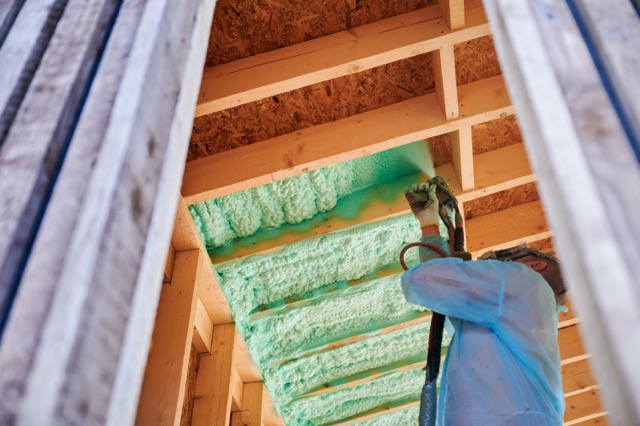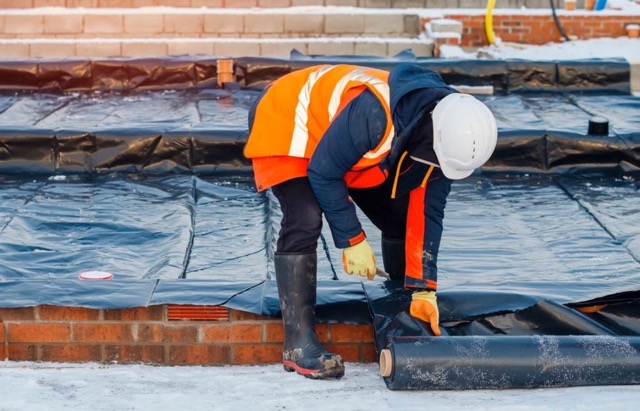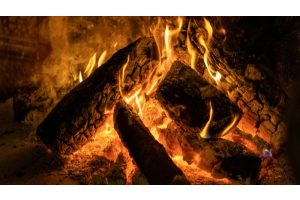How To Damp Proof Your Property

As the UK enters the colder seasons, the risk of damp-related issues in homes increases. Damp can cause significant damage to property, health problems, and discomfort. Understanding the causes, signs, and effective solutions is crucial to protect your home and well-being.
What is Damp?
Damp is excess moisture in a building, often caused by rising groundwater, rainwater penetration, or condensation. It can lead to structural damage, health problems, and unpleasant odours. Identifying the type of damp is crucial for effective treatment, which may involve addressing the source of moisture, improving ventilation, or applying specialised treatments to affected areas.
What Causes Damp?
- Rising Damp: This occurs when moisture rises through the walls from the ground, often due to poor or inadequate damp-proofing.
- Penetrating Damp: This happens when water enters the building from outside, through cracks, leaks, or faulty gutters.
- Condensation: This occurs when warm, moist air meets cold surfaces, causing moisture to condense and form droplets.
How to Spot Signs of Damp
- Mould Growth: Look for dark, fuzzy patches on walls, ceilings, or furniture.
- Musty Odors: A musty or unpleasant smell can be a sign of dampness.
- Peeling Paint: Damp can cause paint to peel or blister.
- Rotting Wood: Damp can lead to wood rot, especially in window frames, doors, and skirting boards.

What is Damp Proofing?
Damp-proofing involves implementing measures to prevent moisture from entering or accumulating within a building. This can include various techniques, such as:
- Physical Barriers: These can be in the form of damp-proof courses, membranes, or coatings applied to walls and floors.
- Ventilation: Ensuring adequate ventilation helps to reduce humidity and prevent condensation.
- Insulation: Proper insulation helps to maintain a stable temperature within the building and reduces the risk of condensation.
Identifying the Type of Damp
Determining the cause of damp is essential for choosing the appropriate solution. A professional damp surveyor can help identify the source and recommend suitable treatments.
Damp is a common problem in British homes, especially in older properties. Here's a guide to help you identify different types of damp:
1. Rising Damp
- Appearance: Salt deposits (efflorescence) on walls, typically at the base.
- Cause: Moisture rising from the ground into the walls, usually due to poor or no damp-proof course.
- Location: Ground floor walls, often in older properties without a damp-proof course.
2. Penetrating Damp
- Appearance: Dark patches, mould growth, and a musty smell.
- Cause: Rainwater entering the property through cracks, gaps, or faulty roofing.
- Location: Walls, ceilings, and windows exposed to the elements.
3. Condensation Damp
- Appearance: Black mould growth, particularly in corners, windows, and ceilings.
- Cause: High humidity levels inside the property, leading to moisture condensing on cold surfaces.
- Location: Areas with poor ventilation, such as bathrooms, kitchens, and bedrooms.
4. Dry Rot
- Appearance: Soft, spongy, and often orange or brown patches on timber.
- Cause: A fungal infection that thrives in damp, poorly ventilated conditions.
- Location: Timber structures, such as floorboards, beams, and joists.
5. Wet Rot
- Appearance: Dark, soft, and stringy patches on timber.
- Cause: A fungal infection that thrives in damp, constantly wet conditions.
- Location: Timber in direct contact with water, such as in basements or near leaks.
Additional Tips:
- Check for signs of damp in areas like basements, attics, and around pipes.
- Look for musty smells or mould growth.
- Consider the age and condition of the property.
- Consult a professional for a proper diagnosis and treatment plan.
Damp Proofing Solutions
- Membranes: These are waterproof sheets placed beneath floors or against walls to act as a barrier against rising damp.
- Paint: Damp-proof paint can be applied to walls to create a protective coating and prevent moisture penetration.
- Gutters and Downpipes: Ensuring that gutters and downpipes are clean and functioning properly helps to prevent rainwater from entering the building.
- Insulation: Proper insulation helps to reduce heat loss and prevent condensation.
- Ventilation: Adequate ventilation helps to control humidity levels within the building.
Preparing for Floods with Quick Dam Products
As the risk of flooding increases, it's essential to be prepared. Quick Dam offers innovative and reusable flood solutions to protect your property.
- Quick Dam QD610-1 Water Activated Flood Barrier: This versatile barrier can be used both indoors and outdoors to block water flow. It expands when wet and can absorb a significant amount of water.
- Quick Dam QD1224-6 Water Activated Flood Bags: These flood bags are ideal for protecting doorways and entry points. They quickly expand when exposed to water, providing a temporary dam.
Explore Our Full Range of Damp Proofing Products!
As the UK prepares for the colder months, it's essential to be proactive in protecting your home from damp-related issues. Understanding the different types of damp, their causes, and the signs to watch for can help you identify and address problems early. By implementing effective damp-proofing measures and maintaining proper ventilation, you can safeguard your property from structural damage, health risks, and discomfort. Remember, prevention is key, so take the necessary steps to ensure a dry and healthy living environment.

Additional Products to Consider:
- Knauf Loft Roll Insulation: This high-performance insulation is ideal for lofts and can help reduce heat loss and prevent condensation.
- Visqueen Black Polythene Membrane: This durable membrane can be used as a damp-proof course or to protect against rising damp.
- Everbuild DPM Paint: This specialised paint is designed to provide a waterproof barrier against rising damp.
- Hedgehog Gutter Brush: This innovative gutter brush helps to keep gutters clean and free of debris, preventing blockages and water overflow.






